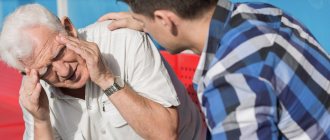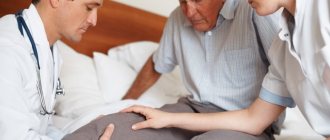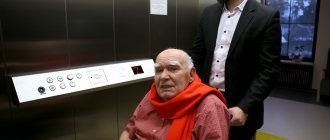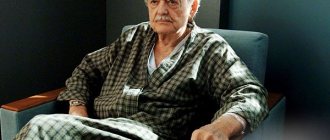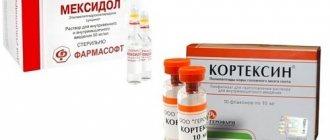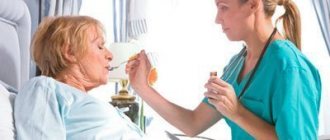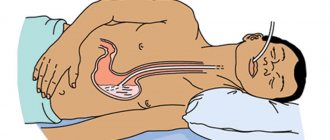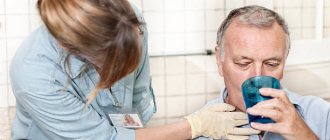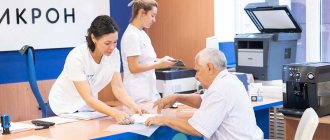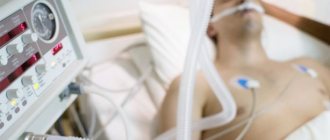- home
- Helpful information
- Tube feeding
Some serious diseases and injuries can disable important reflexes of the body. Without the swallowing function, independent food intake becomes impossible, as a result the patient has to be fed through a special device - a nasogastric tube. This technology can be used not only in hospitals, but also at home.
What is a probe
A nasogastric tube is also commonly called a feeding tube. It is inserted directly into the patient's stomach through the nasal passage and esophagus. It is essentially a hollow tube with rounded ends to prevent tissue damage during insertion. The tube is made of light, elastic and absolutely hypoallergenic material. There is a special funnel on the outside. Through it, food is supplied to Zhane using a syringe. In the normal state, the hole is protected by a special cover, which prevents foreign objects from entering the probe. Employees of the patronage service know all the intricacies of feeding a patient through a tube.
Tube feeding
Pathologies of the digestive system can make independent nutrition difficult. This could be a disease of the oral cavity, esophagus or stomach. Difficulties also arise after surgical interventions. At first, the patient may need feeding through a feeding tube . A special tube allows nutrients to be introduced directly into the stomach or the initial part of the small intestine. Using a tube, you can provide the patient with sufficient nutrition for a long time. At the same time, it is necessary to properly organize care to prevent the development of complications and improve the person’s quality of life.
Main indications for use
Eating through a tube is carried out in cases where the patient is not able to do this on his own. His swallowing function is depressed, there is no clear consciousness, or there are serious lesions in the throat and oral cavity. The probe is most often installed in the following cases:
- After a stroke, if we are talking about damage to the areas of the brain that control the swallowing reflex, the function may be partially or completely inhibited. A return to normal eating habits is possible after completion of rehabilitation. In case of extensive damage and advanced age of the patient, enteral nutrition can be permanent.
- For physical injuries - head injuries, severe swelling of the tongue and larynx.
- If the patient is in a coma or unconscious.
- With the development of psychological disorders, when the patient refuses to eat.
- Neurological diseases (multiple sclerosis, Parkinson's, Alzheimer's), accompanied by corresponding disorders.
- During surgical interventions in the gastrointestinal tract.
Enteral feeding is prescribed in cases where the traditional form of eating is impossible or difficult, if the patient may choke, or if incoming food may infect damaged tissues and organs.
Nutrition
Nutrition of seriously ill patients requires a special approach. It is important to have an understanding of nutritional approaches adapted to food intake, feeding through a gastrostomy tube and possible complications.
Natural nutrition
Food organization and hygiene
Organizing the patient’s nutrition is an important component of overall care. The correct approach to feeding will allow the sick person’s body to recover faster and return to its normal lifestyle. At home, it is necessary to create the most comfortable conditions for a person who cannot take care of himself.
Care items for bedridden patients should be located in such a way that, if necessary, the patient himself can reach them.
On the bedside table/table by the patient’s bed: fresh drinking water and a glass (mug or sippy cup), a pill box with laid out medications, a bell with which, if necessary, he can call the person caring for him.
To maintain the required position of the patient when feeding him from a spoon, various devices are used: a collar that fixes the head; belts for fixing the patient in the desired position; special tables and trays with legs, etc.
Before eating, you should complete all procedures and physiological functions of patients, clean and ventilate the room, and help seriously ill patients wash their hands.
If the patient cannot sit in bed, he needs to be given a semi-sitting position by raising the headrest or placing several pillows under the chest.
The neck and chest are covered with a napkin, oilcloth or an apron. For bedridden patients, bedside tables are used during feeding, on which food is placed.
Remember: the absence of crumbs on the bed is the prevention of bedsores!
You can make the feeding process easier with the help of special utensils: cutlery with thick rubber handles (for recovering patients who begin to feed themselves); plates with rubber stands and suction cups (prevent slipping); deep plates with a chin cutout or high sides; sippy cups, etc.
Diet
Nutrition for bedridden patients is selected especially carefully. Despite the lack of physical activity, such people require food with a high content of calories and protein. This ensures the normal course of recovery processes.
Basic requirements that a diet for bedridden patients must meet:
- the presence of a full set of nutrients with an optimal ratio of vitamins and microelements;
- increased protein content (120-150 g per day);
- sufficient calorie content (2.5-3.5 thousand kcal depending on the person’s height and weight);
- predominantly slow carbohydrates (keep quickly digestible sugars to a minimum);
- reduced fat consumption (up to 100 g);
- the presence of fiber in the diet (natural in the form of vegetables or pharmaceutical in powder form);
- a sufficient volume of water (30-40 ml per kg of weight) for the active removal of metabolites from the body.
During the cooking process, it is important to preserve maximum nutrients and make food easily digestible. Preference is given to boiling, steaming, and baking. Vegetables and fruits can be given raw, after washing them thoroughly. Food for bedridden patients should be soft, not overdried, cut into small pieces for convenience or crushed in a blender. The optimal form of food is puree. The temperature of the food served should not exceed 45-50 degrees.
To ensure the most balanced diet, you can resort to introducing ready-made dry mixtures into the menu for bedridden patients. These products contain an optimal ratio of protein, vitamins B and C, and low fat content. All components of this diet are easily digestible and natural.
You can also feed a bedridden patient a mixed diet (add 1-2 tablespoons of the nutritional mixture to the usual diet):
- Prepare food that is easy to chew and easy to digest;
- Cut solid foods into small pieces;
- Do not serve all food pureed. The intestines will work worse, and such food will be less enjoyable;
- If your loved one cannot chew and refuses pureed food, offer him to hold a small piece of any food in his mouth - this will satisfy his taste needs. Then you can spit out the remains;
- If the patient has dentures, prepare him soups, cereals and pureed dishes more often, they will not rub the gums under the dentures;
- Remember to eat a balanced diet. Always offer your loved one a choice of food. Consider his preferences as much as possible.
Avoid:
- very cold/hot foods and drinks - it is preferable that the food is very warm, but not hot;
- carbonated drinks;
- foods that cause increased gas formation, excessively fatty, smoked, spicy, salty foods.
Nutrition for patients after a stroke
The diet of a bedridden patient is compiled taking into account the diseases that cause limited movement. Patients with brain damage (who have had a stroke) need a diet with a high content of fatty acids (saturated and unsaturated). It is these components that make up fats, which play a vital role in the structure and restoration of brain tissue.
A patient’s diet after a stroke can include:
- fresh vegetables and fruits;
- dietary (lean) meat, fish;
- milk and dairy products;
- porridge, whole grain bread;
- sources of polyunsaturated fatty acids – olive, flaxseed, almond oils.
In the first days after a stroke, patients usually have difficulty swallowing, so during this period they resort to feeding through a tube or intravenous administration of nutrients. Another feature of nutrition after a stroke: it should be low in calories, but at the same time contain many nutrients. To achieve this, limit the consumption of carbohydrates, especially simple ones.
Nutrition for the prevention of bedsores
Meal frequency
As a rule, the patient’s daily diet is divided into 5-6 small portions. Feeding on a schedule ensures that the cycle of gastric juice secretion is established. After just a few days, the body will get used to receiving food at the same time and the patient’s appetite will awaken.
It is important to know the capacity (capacity) of dishes and cutlery used by the patient to assess the incoming food and liquid. A serving can be 2-3 spoons if a person does not want more. Let's eat no more than 2 dishes at a time.
The intervals between meals should be approximately the same. When drawing up a nutritional schedule, take into account the patient’s daily routine and the time of taking medications. Some medications must be taken strictly at a certain time on an empty stomach or, conversely, only after meals.
Feeding process
Always comment on all your actions and warn about them. Even if it seems to you that the patient does not hear or understand you!
- Raise the head of the bed or head - the patient should half sit so as not to choke;
- Place a towel or waterproof napkin on your chest;
- Place a towel under your head so as not to stain the pillowcase;
- For food and drinks, use a bedside table or folding table;
- To preserve reflexes, give a cutlery to a person’s hand, even if he does not use it - it is very important to maintain independence until the end;
- Don't put a lot of food on the spoon at once;
- Make sure that the patient chews and swallows food before giving another spoon;
- Wait until the patient opens his mouth when the spoon touches his lips;
- Don't insist that the person eat the entire portion;
- Don't criticize him because you think he hasn't eaten enough. And don't be offended by it;
- If the food is cold, reheat it.
Try to isolate the patient from cooking odors if they cause nausea in the patient. Ventilate the room after feeding.
Drinking regime
- The total volume of liquid is at least 1.5 liters per day;
- For drinking, you must have two containers: for cold and for hot drinks. As a rule, a bedridden patient cannot drink from a cup;
- You can use special sippy cups, from which liquid flows out in small portions and does not spill, or drink from ordinary dishes with a straw, a teaspoon or dessert spoon, a teapot with a low-lying wide spout, or a bottle with a nipple;
- Give liquid in small portions. It is difficult for the patient to swallow a full tablespoon at once;
- We recommend boiled chilled water (change every 2 hours), fruit drinks, juices, compotes;
- Assessment of the body's water balance (compiled at the same time every day) Balance = incoming fluid + oxidative water - excreted fluid.
If a person refuses food and water or eats and drinks little
Find out the reason. Perhaps it:
- Reduced metabolic rate: a sick or elderly person only needs a small amount of food, as he spends little energy;
- Taking medications: Some medications reduce appetite and affect the sense of taste
- Constipation;
- Depression;
- Pain;
- Unappetizing looking or tasteless food;
- Natural development of the disease (the final stage of the disease is characterized by loss of appetite and refusal of water);
- Fear of having to ask for help to go to the toilet;
- Don't force feed a person. Consult your doctor.
Force-feeding spoils the mood and relationships with loved ones leads to swelling, nausea, coughing, bloating, vomiting, shortness of breath, and choking.
Moisturize your lips and mouth. Regularly clean your mouth with cotton swabs containing glycerin (available at the pharmacy) or moistened with water. Give the person small pieces of ice to chew on. You can add lemon or sage to the ice water. You can wipe your lips with a cotton pad soaked in water, treat them with Vaseline or hygienic lipstick.
Hygiene
Help the patient wash their hands or wipe them with a damp towel before and after eating.
After feeding, offer to rinse the mouth, and if the person is unable to, clean the mouth with a gauze swab moistened with boiled water.
If necessary, wipe your lips with a tissue during feeding.
Use hot wet wipes for facial and hand hygiene.
Artificial nutrition?
For a number of diseases, when feeding the patient through the mouth is impossible, artificial nutrition is prescribed. Artificial nutrition is the introduction of nutrients into the body using a gastric tube, enema or parenterally (subcutaneously, intravenously). In all these cases, normal nutrition is either impossible or undesirable, since it can lead to infection of wounds or food entering the respiratory tract, followed by inflammation or suppuration in the lungs.
Practical recommendations “Care for stomas”
Administration of food through a gastric tube
With artificial nutrition through a gastric tube, you can introduce any food in liquid or semi-liquid form, after first rubbing it through a sieve. Vitamins must be added to food. Usually milk, cream, raw eggs, broth, slimy or pureed vegetable soup, jelly, fruit juices, dissolved butter, tea are introduced.
Artificial nutrition through a gastric tube is carried out as follows:
- a sterile thin probe is lubricated with Vaseline and inserted through the nasal passage into the stomach, adhering to a direction perpendicular to the surface of the face. When 15–17 cm of the probe is hidden in the nasopharynx, the patient’s head is slightly tilted forward, the index finger is inserted into the mouth, the end of the probe is felt and, lightly pressing it against the back wall of the pharynx, it is pushed further with the other hand. If the patient’s condition allows and there are no contraindications, then during insertion of the probe the patient sits; if the patient is unconscious, then the probe is inserted in a lying position, if possible, under the control of a finger inserted into the mouth. After insertion, you need to check whether the probe has entered the trachea: you need to bring a fluff of cotton wool or a piece of tissue paper to the outer end of the probe and see if they sway when you breathe;
- through a funnel (200 ml capacity) at the free end of the probe, under slight pressure, slowly pour in liquid food (3-4 glasses) in small portions (no more than a sip);
- After introducing nutrients, clean water is poured in to rinse the probe. If the probe cannot be inserted into the nasal passages, then it is inserted into the mouth, firmly fixed to the skin of the cheek.
Another type of artificial nutrition is rectal nutrition - the introduction of nutrients through the rectum. With the help of nutritional enemas, the body's losses in fluid and table salt are restored.
The use of nutritional enemas is very limited, because only water, saline, glucose solution and alcohol are absorbed in the lower part of the large intestine. Proteins and amino acids are partially absorbed.
The volume of the nutrient enema should not exceed 200 ml, the temperature of the injected substance should be 38–40 °C.
A nutritional enema is given 1 hour after cleansing and complete bowel movement. To suppress intestinal peristalsis, add 5-10 drops of opium tincture.
Using a nutrient enema, saline solution (0.9% sodium chloride solution), glucose solution, meat broth, milk, and cream are administered. It is recommended to give a nutritional enema 1-2 times a day, otherwise you can cause irritation of the rectum.
Administration of nutrition subcutaneously and intravenously
In cases where enteral nutrition cannot provide the patient’s body with the required amount of nutrients, parenteral nutrition is used.
Liquid in the amount of 2–4 liters per day can be administered by drip in the form of a 5% glucose solution and a solution of table salt, complex saline solutions. Glucose can also be administered intravenously in the form of a 40% solution. The amino acids necessary for the body can be administered in the form of protein hydrolysers (aminopeptide, hydrolysis L-103, aminobloria), plasma.
Parenteral nutrition drugs are most often administered intravenously. If frequent and long-term use is necessary, vein catheterization is performed. Subcutaneous, intramuscular, and intra-arterial routes of administration are less commonly used.
Correct use of parenteral drugs, strict consideration of indications and contraindications, calculation of the required dose, adherence to the rules of asepsis and antisepsis can effectively eliminate the patient’s various, including very severe, metabolic disorders, eliminate the phenomena of intoxication of the body, normalize the functions of its various organs and systems
Installation procedure
Manipulations can be carried out in a hospital setting or at home, but they should only be performed by a specialist. It is advisable that the patient is conscious at the same time, otherwise the probe tube may get into the respiratory tract. To prevent this, the patient makes a swallowing movement during passage. If this is not possible, the doctor guides the device into the patient's throat with two fingers.
How is a nasogastric tube placed?
This manipulation is performed by the attending physician or a doctor in the endoscopy department when there is a need for endoscopic control. The probe, under local anesthesia, is inserted through the nasal passage into the pharynx and slowly moves into the stomach, while the patient helps the doctor by making swallowing movements. When setting, there is no need to resist, as this brings even more discomfort.
Nutritional Features
If the patient feels normal after installation, you can start eating immediately. All dishes served must have only a liquid consistency. They should be warm, that is, temperatures of 37-39 degrees. Hot foods may cause burns.
It is necessary to increase the volume of servings gradually; the first two or three times it should not be more than 100 ml. In the future it can be increased to 300 ml. The following products are best suited for enteral nutrition:
- Kefir;
- Fish, meat, vegetable broths;
- Thoroughly mashed puree;
- Rare porridges, especially semolina;
- Special mixtures.
Ready-made dry mixtures can be used as a basis for nutrition or in addition to the diet. They are rich in protein, which bedridden patients often lack.
The number of meals should be no more than 5, but not less than 3. A sterile syringe must be used for administration each time. The nursing service specialists strictly follow all the rules for feeding through zones and carefully monitor the hygiene of the entire process.
Enteral nutrition for stroke patients
Stroke is a disease that affects the body as a whole. A person who has suffered a stroke is forced to start living again: it is necessary to learn to move, walk, talk and even eat again.
One of the consequences of a stroke is the loss of the ability to eat independently due to partial or complete paralysis. In addition, disturbances in nervous regulation cause weakness in a variety of muscles, so some patients are unable to eat on their own: they must be spoon-fed.
Malnutrition is one of the most common disorders observed in stroke patients. The causes of nutritional deficiency are usually insufficient food intake due to disturbances in consciousness and swallowing or loss of appetite.
This is also facilitated by the characteristics of such patients: advanced age; disturbances of consciousness; slower pace of movements, poor coordination and/or prolonged immobility; visual inattention and/or loss of visual fields; communication problems and speech disorders (not being asked to eat or drink); decreased appetite and thirst; depression and dependence on others.
According to statistics, about half of people who have had a stroke have difficulty eating. Problems with swallowing (dysphagia) can lead to malnutrition and weakening of the patient. Due to the disturbances that have arisen, eating regular food becomes impossible, and very often dangerous.
Inadequate nutrition is not only accompanied by loss of body weight, decreased physical performance, and deterioration of well-being, but also causes serious metabolic disorders, weakened immune defense and endocrine dysfunction, which affects the development of infectious complications and the acquisition of new diseases. Because of this, the recovery period is lengthened and the person returns to normal life much more slowly.
Nutrition is an important area of therapy for stroke patients. Managing dysphagia and eating an appropriate diet are part of the recovery process. The diet for stroke is aimed at solving two main problems: restoring a weakened body and health, as well as preventing relapse.
In order to avoid difficulties associated with eating and comply with nutritional requirements, special mixtures for therapeutic nutrition have been created. Such mixtures have a balanced composition, are easily digestible and do not put additional stress on the process of digestion and absorption of nutrients.
Malnutrition can be compensated by the use of special nutritional mixtures, and such treatment is more effective the earlier it begins.
Feeding process
The procedure is carried out according to the following algorithm:
- The patient's body is given a semi-sitting position;
- The outer part of the probe is lowered below the patient’s neck and compressed with a special clamp;
- The funnel is connected to the syringe, it rises to a level of up to half a meter above the stomach, after which the clamp is removed.
- Food is served slowly, with virtually no pressure; no more than 150 ml should be administered in 5-6 minutes.
- After finishing feeding, it is necessary to rinse the area by applying 30-50 ml of water through it.
- Next, the tube is clamped again, lowered, and the inlet is closed with a plug.
Tube is a modern and effective way of feeding seriously ill patients. It has a lot of advantages. Unlike intravenous nutrition, in this case atrophy of the gastric mucosa is not allowed, the gastrointestinal tract system remains in working order. The enteral system can be used for a long time. The probe is installed for three weeks. The administration procedure must be carried out by a doctor, and he must also give his recommendations regarding the feeding procedure and diet.
